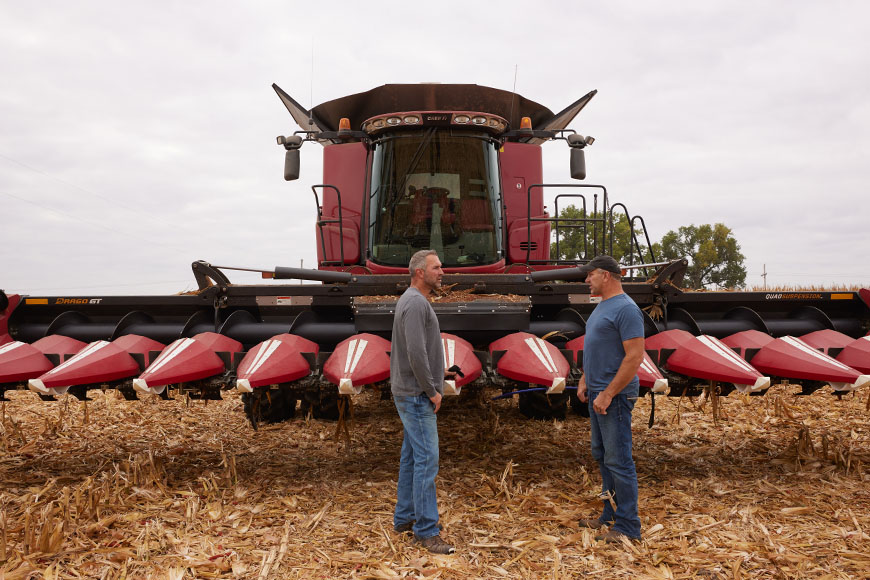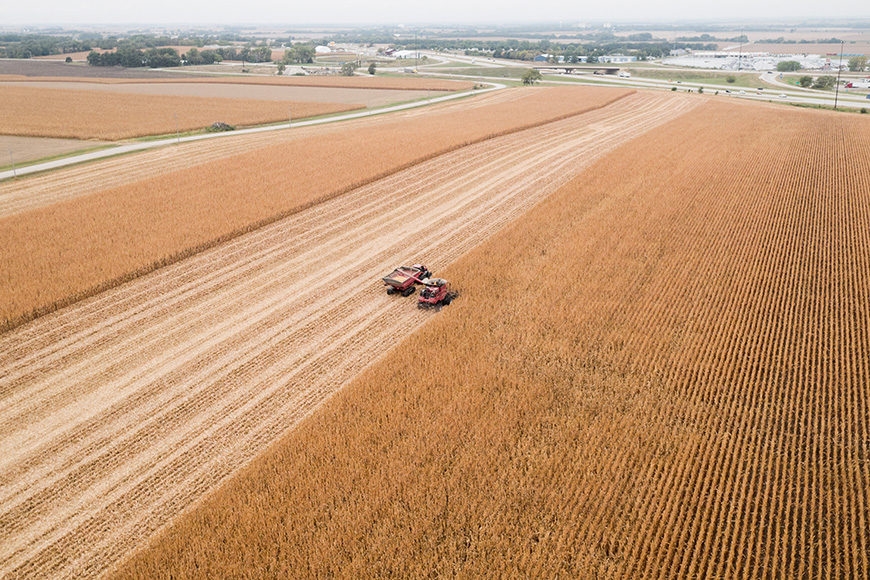Use Data to Customize Your Weed Management Program

With new weed management options available for soybeans, I’ve been fielding questions recently about what the best program is. The truth is, there are many effective options available, and building a solid plan ultimately comes down to finding products that fit with your intended management plan. Using data to guide those decisions can help you build an effective season-long weed control strategy.
CROPLAN®-branded WinPak® varieties are an excellent option to help manage risk and mitigate in-season challenges. WinPak soybeans include a combination of two different varieties that offer both offensive and defensive agronomic characteristics. That brings an exceptional level of stability throughout the field by increasing yield potential on tough acres while maintaining yield in higher-producing areas.
Answer Plot yield trials in 2018 showed that WinPak varieties outyielded non-WinPak soybeans of the same maturity in every geography tested.2 The overall average yield advantage across all locations was 1.6 bushels per acre. Trusted, replicated data can help you understand seed placement and management to maximize yield potential.
Compared to the cost of herbicides, InterLock is a relatively low-cost addition that ensures the active ingredient stays on target. That can result in better herbicide coverage, more effective weed control and less likelihood that you’ll need to respray to control weed escapes. Not all drift and deposition aids are formulated the same, so when in doubt, ask for performance data.
1. Based on 2018 Answer Plot herbicide trait trial data.
2. Based on 2018 Answer Plot trial data.
3. Based on WinField United Innovation Center wind tunnel trials.
Important: Before use always read and follow label instructions. Crop performance is dependent on several factors beyond the control of WinField United, including without limitation soil type, pest pressures, agronomic practices and weather conditions. Growers are encouraged to consider data from multiple locations over multiple years and be mindful of how such agronomic conditions could impact results.
© 2019 WinField United. Answer Plot®, CROPLAN®, InterLock®, OnTarget®, WinPak® and WinField® are trademarks of WinField United. Roundup Ready 2 Xtend® is a trademark of Bayer. LibertyLink® is a trademark of BASF.
Start with trait platform selection
The logical place to start when building your weed management program is with your seed’s trait platform. Based on the most troublesome weeds in your field, you likely have an idea of what chemistry will be most effective. For example, in my geography the LibertyLink® platform is still effective against the most problematic weeds in many situations. You also need to consider application logistics and what products will allow you the flexibility to get all your acres covered. As you look ahead to next season, consider both of these factors as you choose the trait platform you’ll use.Pair traits with the right seed genetics
Once you’ve established which herbicide trait platform you’d like to use, it’s critical that you choose the right genetic package for your acres. Herbicide trait yield trial data from the 2018 Answer Plot® program shows that for the most part seed companies have successfully integrated dicamba-tolerant traits into elite genetic lines. In the trials, Roundup Ready 2 Xtend® soybean varieties in the 2.8 maturity group outyielded LibertyLink soybeans by nearly 3 bushels per acre.1 Data like this can help you determine whether the yield advantages of new genetics are enough to offset the higher seed and chemistry costs.CROPLAN®-branded WinPak® varieties are an excellent option to help manage risk and mitigate in-season challenges. WinPak soybeans include a combination of two different varieties that offer both offensive and defensive agronomic characteristics. That brings an exceptional level of stability throughout the field by increasing yield potential on tough acres while maintaining yield in higher-producing areas.
Answer Plot yield trials in 2018 showed that WinPak varieties outyielded non-WinPak soybeans of the same maturity in every geography tested.2 The overall average yield advantage across all locations was 1.6 bushels per acre. Trusted, replicated data can help you understand seed placement and management to maximize yield potential.
Ask for product performance data
The label often dictates what tank-mix partners you’ll need to use, especially in the case of low-volatility dicamba. However, just because a product is approved for application doesn’t mean it’s the most effective and economical choice. WinField United spray data shows that when InterLock® adjuvant is added to the dicamba tank mix with glyphosate and OnTarget® adjuvant, there is a 60 percent reduction in the number of fine spray particles.3Compared to the cost of herbicides, InterLock is a relatively low-cost addition that ensures the active ingredient stays on target. That can result in better herbicide coverage, more effective weed control and less likelihood that you’ll need to respray to control weed escapes. Not all drift and deposition aids are formulated the same, so when in doubt, ask for performance data.
Put it all together
Building an effective weed management program requires looking at the big picture and making individual decisions that are backed by solid data and fit your overall management and yield goals. There’s not one plan that works for everyone. Work with your locally owned and operated WinField United retailer to develop a customized plan and use data to fine-tune it based on in-season results.1. Based on 2018 Answer Plot herbicide trait trial data.
2. Based on 2018 Answer Plot trial data.
3. Based on WinField United Innovation Center wind tunnel trials.
Important: Before use always read and follow label instructions. Crop performance is dependent on several factors beyond the control of WinField United, including without limitation soil type, pest pressures, agronomic practices and weather conditions. Growers are encouraged to consider data from multiple locations over multiple years and be mindful of how such agronomic conditions could impact results.
© 2019 WinField United. Answer Plot®, CROPLAN®, InterLock®, OnTarget®, WinPak® and WinField® are trademarks of WinField United. Roundup Ready 2 Xtend® is a trademark of Bayer. LibertyLink® is a trademark of BASF.




